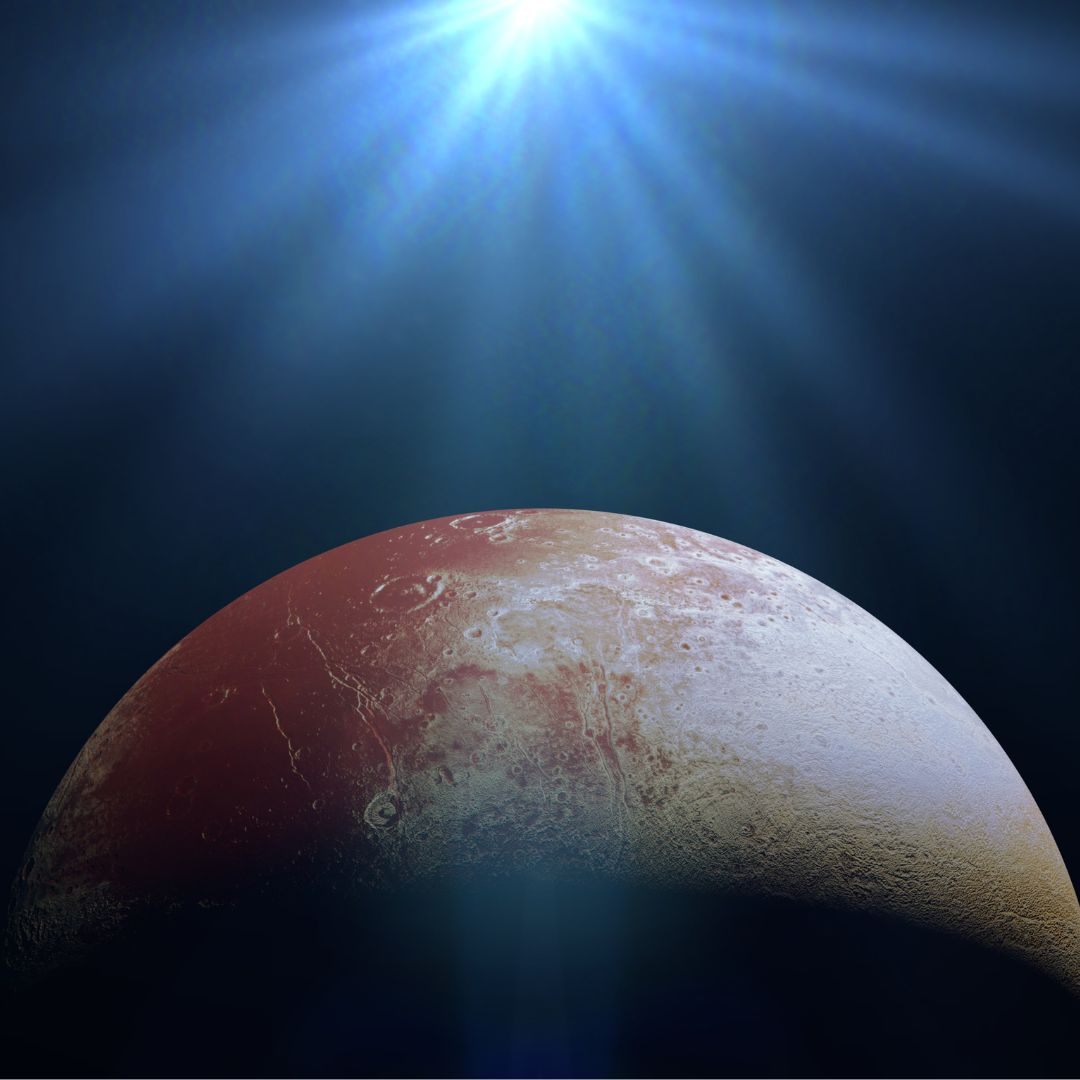
The Planet Pluto
~5 min read
That’s right. I said it. The planet Pluto. It seems we all know what a planet is until we go to describe it. When I consult my old astronomy books, they don’t even define the word planet. That would be silly, everyone knows what a planet is. Collins Dictionary says, “A planet is a large, round object in space that moves around a star.” In the Solar System, planets orbit the Sun and moons orbit planets. If we go far enough back, planet is from the Greek for “wanderer” and refers to the apparent motion of planets against the relatively fixed backdrop of stars.
So, What is a Planet?
As astronomers learn more about the Solar System, the definition changes. One recent definition for a planet is:
- It must orbit a star (in our cosmic neighborhood, the Sun).
- It must be big enough to have enough gravity to force it into a spherical shape.
- It must be big enough that its gravity cleared away any other objects of a similar size near its orbit around the Sun.
The definition of what constitutes a planet continues to evolve as astronomers try to incorporate the plethora of objects floating around the Solar System and other planetary systems.
For the record, none of the major planets in the Solar System have cleared their orbits. In solving Newton’s laws for the motion of objects in gravitational fields, there are stable solutions for three bodies moving under the influence of mutual gravitational fields, especially when the masses are very different. While the Hubble Telescope orbits Earth in a stable orbit, the James Webb Space Telescope actually orbits the Sun (in conjunction with Earth). The orbit is not entirely stable, and we must do adjustments to keep the telescope in place. The location of the telescope is called a Lagrange Point, named after Mr. Lagrange, who first figured out these orbital possibilities. All planets have Lagrange Points and objects tend to pile into these locations. These objects are sometimes called Trojan Asteroids.
Dwarf Planets: A distinction without a difference
One approach astronomers have developed is to call some planets Dwarf Planets. This is a distinction without a difference. Some planets are bare rock, called Rocky or Telluric Planets. Examples include Mercury, Venus, Earth, and Mars. Some planets are mostly gas, called Giant Gas Planets. Examples include Jupiter, Saturn, Uranus, and Neptune. Note that the terms Dwarf, Telluric and Gas Giant are adjectives used to describe the planets. In all cases, they are planets. A more complete description of Pluto would be a Dwarf Telluric Planet located in the Kuiper Belt just outside the orbit of Neptune, so another planet.
While we’re talking about adjectives, when viewed from space, Earth is pale blue. When viewed from the orbit of Pluto, it is a Pale Blue Dot. According to NASA, Pluto is white, tan and brownish red. We could add that to the list of adjectives to describe Pluto and this also would not affect its description as a planet. It’s just an adjective.
There are currently five celestial objects in the Solar System classified as Dwarf Planets: Pluto, Eris, Ceres, Makemake, and Haumea. They are sometimes called the Minor Planets.
And astronomy has lots of Dwarf things. Dwarf Stars are a main feature of the Main Sequence of Stars, and nobody is going around saying they aren’t stars. There are lots of smaller galaxies with only a few billion stars, unlike the Milky Way Galaxy, which has a hundred billion stars. These are called Dwarf Galaxies. Most galaxies in the universe are Dwarf Galaxies. Nobody is saying Dwarf Galaxies aren’t galaxies. There are two Dwarf Galaxies orbiting the Milky Way Galaxy in the southern celestial hemisphere. They are called the Magellanic Clouds.
To say Pluto is not a planet is a misstatement of the facts. If anything, we are undercounting the number of planets in the Solar System. Personally, I am proud to include Pluto as one of the planets and would be pleased to include the others as well. To do otherwise would be incorrect, Neil deGrasse Tyson notwithstanding.


